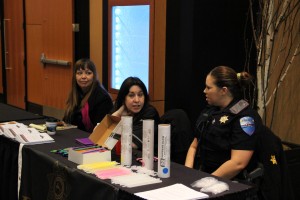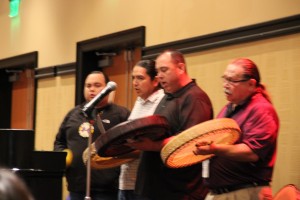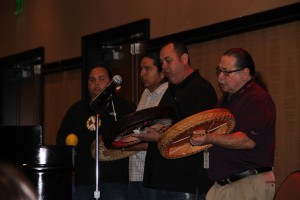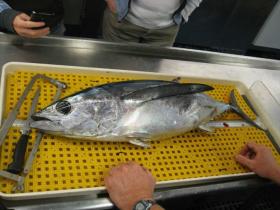By Andrew Gobin, Tulalip News
The Tulalip Education Department gathered more than 150 representatives from Snohomish County employers, universities, colleges, technical schools, vocational schools, public safety officials, and the military for a comprehensive opportunity exposition on April 22 at the Tulalip Resort Casino. The expo, which filled the entire resort convention area, allowed students and parents to speak with these representatives about their respective fields or entities, allowing the students to explore their options for life after high school.
“There is a time to decide who you want to be in life, what you will do, what type of person you’ll be, and what you want your life to be like. That time is now,” say Ray Fryberg Sr. who spoke when students arrived.
Fryberg, who led a group of Tulalip singers, also sang two songs to welcome students.
Dr. Becky Berg, Superintendent for the Marysville School District, welcomed students to the event, echoing Fryberg and acknowledging the diverse cultures represented in the district.
“Even as you choose a path in life, it is so important to remember your culture as you move forward,” she said.
After the opening remarks, students made their way through a maze of booths where they could stop and talk with employers or recruiters about what they could offer, and what students needed to do to succeed on whichever path they chose.
About 2000 junior and senior high school students from throughout the Marysville School District, and their parents, visited the expo in one of four 90 minute sessions between 8:00 a.m. and 3:30 p.m. The sessions’ limited attendance, allowing students to engage with presenters without the distraction of being crowded. With the ability to move about freely, many presenters brought interactive displays. Chiropractors had skeletal models, engineering firms had working control panels for fire alarm and sprinkler systems, and there was even a vet with a dog and models of canine mandibles.
Some students were looking at colleges and universities, some at vocational schools, and some were more interested in on the job training. Law enforcement, public safety, and military recruiters also added many students to their mailing list for informational packets on entering those fields as well.
“It was a definite success,” said Jeanne Steffner, the Adult Education Financial Aid and Scholarship Specialist for the Tulalip Education Department. “I wish they would do this in other districts. I don’t think students are fully aware of the options open to them. This expo helps them come away with a clear plan for after high school.”
The Tulalip Education Department handed out more than 200 packets to attendees on resources for post-high school education, which is a clear indicator that students wanted to know their options. As more students graduate and move on to higher education or into the workforce, the Marysville School District is closer to success in its mission of 100% graduation, college or career ready.
Andrew Gobin is a reporter with the See-Yaht-Sub, a publication of the Tulalip Tribes Communications Department.
Email: agobin@tulaliptribes-nsn.gov
Phone: (360) 716.4188
































































